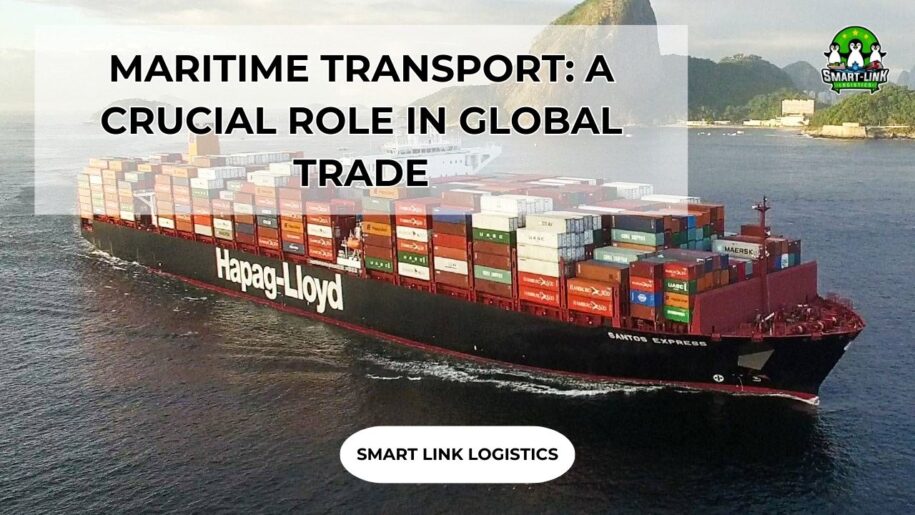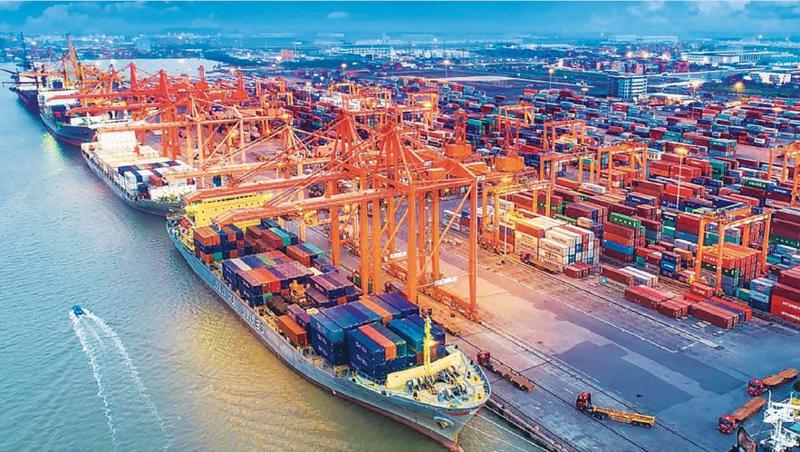
MARITIME TRANSPORT: A CRUCIAL ROLE IN GLOBAL TRADE
Maritime transport plays a vital role in global trade, serving as the primary means of transporting goods between countries and continents. With the ability to carry large volumes of goods at low costs, maritime transport is the optimal choice for many businesses. Below is an overview of maritime transport, from its historical development, types of ships, transport processes, to current challenges and solutions.
1. The History of Maritime Transport
It has existed since ancient times, when humans began using boats to travel and transport goods. Ancient civilizations like Greece, Rome, and Egypt developed sea routes for trading and exchanging goods. By the Middle Ages, coastal European countries started expanding trade, leading to significant development in the maritime industry.
In the 19th and 20th centuries, the advent of steam engines and later diesel engines revolutionized maritime transport. Modern ships can carry larger volumes of goods at faster speeds and over greater distances. Today, maritime transport accounts for approximately 80-90% of the total volume of global trade.
2. Types of Ships
2.1 Container Ships
- Features: Transport goods in standard containers.
- Advantages: Easy loading and unloading, and seamless transition between different transport modes (rail, road).
2.2 Bulk Carriers
- Features: Transport bulk goods like coal, iron ore, and grains.
- Advantages: Capable of carrying large quantities of homogeneous goods.
2.3 Oil Tankers
- Features: Transport petroleum products.
- Advantages: Specially designed to ensure safety when transporting flammable liquids.
2.4 General Cargo Ships
- Features: Transport various types of goods, not limited to containers.
- Advantages: Flexible in transporting different kinds of goods.

3. Maritime Transport Process
3.1 Preparing Goods
- Packing: Goods must be securely packed to ensure safety throughout the transport process.
- Labeling: Label goods with full information about the product, sender, and receiver.
3.2 Choosing the Ship and Route
- Selecting the Ship: Choose the appropriate type of ship based on the type of goods and transport requirements.
- Choosing the Route: Determine the optimal sea route in terms of cost and time.
3.3 Signing the Transport Contract
- Contract Agreement: Sign a transport contract with the shipping company, clearly stipulating terms regarding time, costs, and responsibilities of the parties involved.
3.4 Customs Procedures
- Customs Declaration: Declare goods information and complete export customs procedures at the departure country and import customs procedures at the destination country.
3.5 Loading and Unloading Goods
- Loading Goods onto the Ship: Load goods onto the ship as planned.
- Unloading at the Destination Port: Upon arrival at the destination port, unload goods and complete import procedures.
3.6 Delivery
- Domestic Transport: After unloading at the port, transport goods to the recipient’s address using domestic transport means.
4. Challenges and Solutions in Maritime Transport
4.1 Challenges
- Environmental Pollution: Maritime transport significantly contributes to air and marine pollution.
- Maritime Security: Threats from piracy and other security risks.
- Climate Change: Weather changes and sea level rise affecting sea routes.
4.2 Solutions
- Using Clean Fuels: Encourage the use of biofuels and emission reduction technologies.
- Enhancing Security: International cooperation to patrol and protect key sea routes.
- Infrastructure Upgrades: Invest in port infrastructure and advanced transport technologies to improve transport efficiency.
Conclusion
Maritime transport is an indispensable part of global trade, offering numerous benefits in terms of cost and the ability to transport large volumes of goods. However, the industry also faces many challenges that require continuous cooperation and innovation to ensure sustainable development. Understanding and adhering to procedures, as well as applying advanced solutions, will help businesses optimize their operations and contribute to the growth of the maritime transport industry.
Smart Link Logistics hopes that the information above will be helpful for you in the process of importing chemicals. We are committed to providing services and solutions to help goods reach global markets with dedication and customer partnership. With over 13 years of experience in the logistics field, we pride ourselves on being a reliable and professional provider.
Hotline: + 84 935 766 039 to know more about our services

If you require assistance with international import and export of goods, please contact our team at Smartlink Logistics. We are available to provide you with professional guidance on our services and the necessary customs procedures.
SMART LINK: BEST SERVICE BEST YOU


































